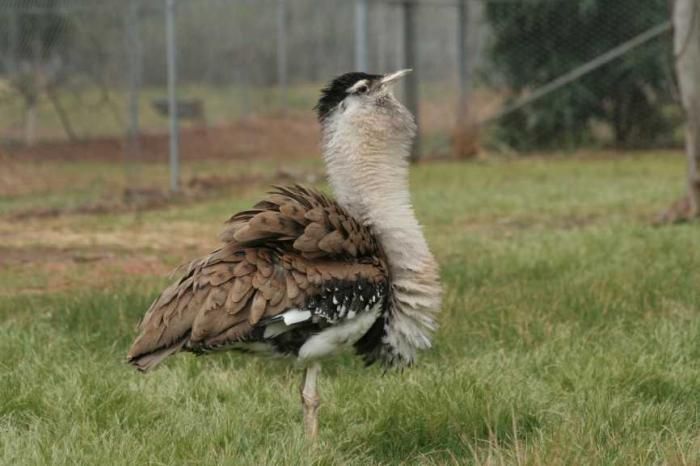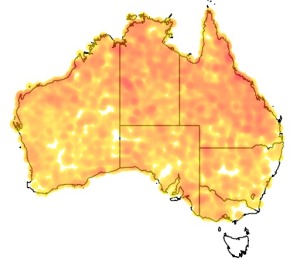Colours
Distinguishing features
Although it is the largest extant flying land bird in Australia, this long-legged bird is the smallest species in the Ardeotis genus. The back, wings and tail are dull brown, mottled black and white markings on the wing coverts. The neck and head appear dull white and the crown black. Legs are yellow to cream coloured. (Wikipedia)
Size
- Up to 120 cm (Height) - applies to Males
- Up to 80 cm (Height) - applies to Females
Wingspan
- Up to 230 cm - applies to Males
- Up to 180 cm - applies to Females
Synonyms
Distribution
Distribution and habitat preferences
It is a large ground bird of grassland, woodland and open agricultural country across northern Australia and southern New Guinea.
Behaviour
When disturbed, Australian Bustards often adopt a cryptic pose with neck erect and bill pointed skywards. They may stalk gradually away or run if alarmed, taking flight as a last resort. (Wikipedia)
Diet
Populations are highly nomadic following rain and feed, which includes seeds, fruit, centipedes, insects, molluscs, lizards, young birds and small rodents. (Wikipedia)



